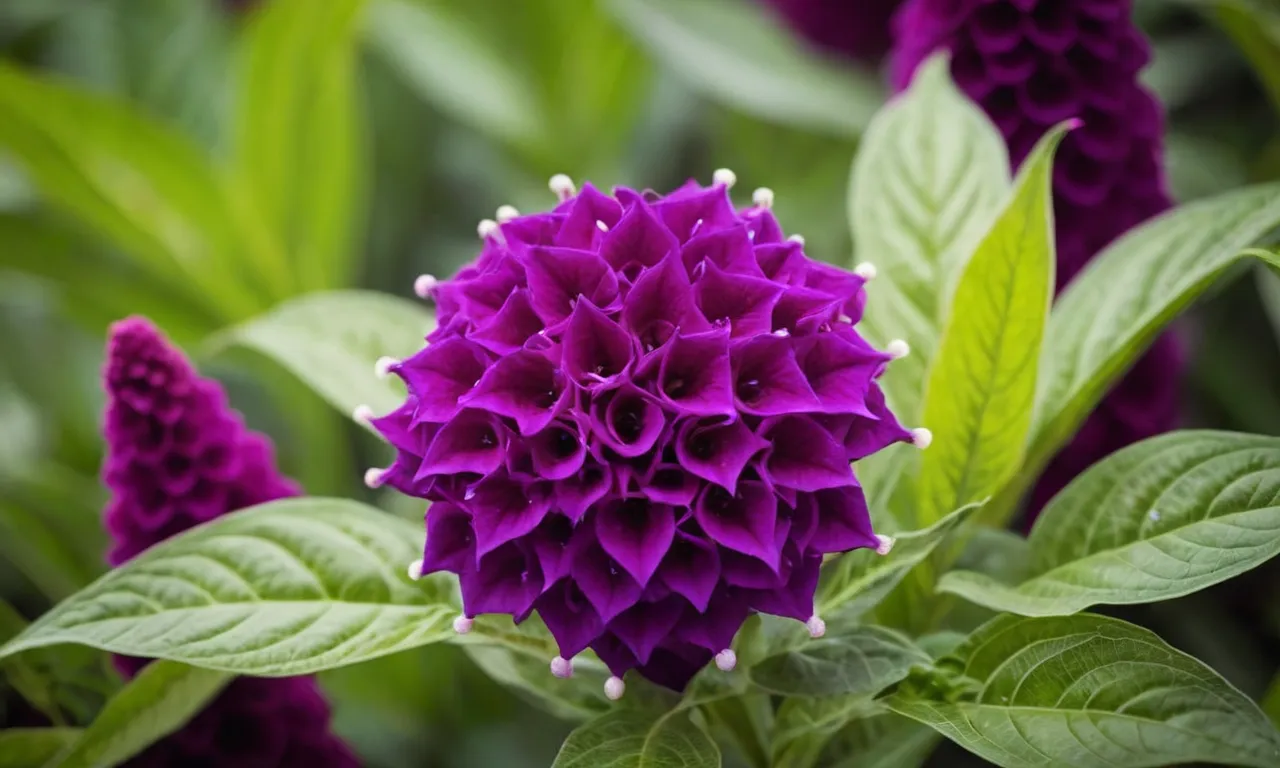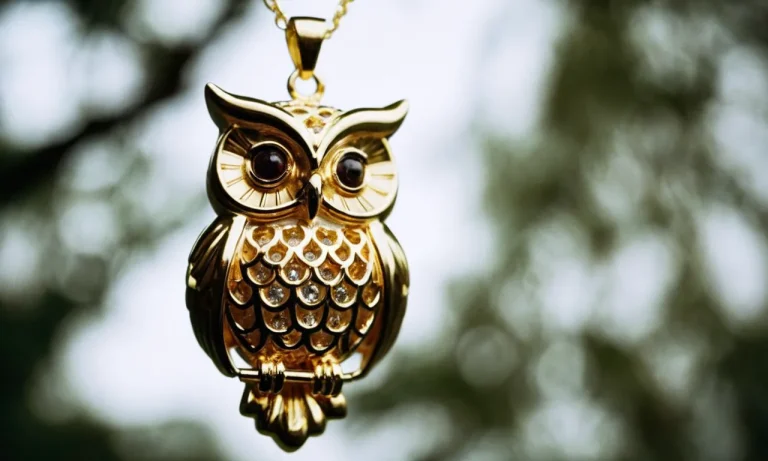Celosia Flower Meaning: Unveiling The Symbolism Behind This Vibrant Bloom
In the kaleidoscopic tapestry of the floral world, the celosia flower stands out as a captivating and enigmatic presence, its vibrant hues and unique form beckoning us to unravel the secrets behind its symbolism.
If you’re short on time, here’s a quick answer to your question: The celosia flower, with its striking resemblance to a vibrant plume or brain-like structure, symbolizes humility, singleness of heart, and unwavering faith.
Its diverse meanings span across cultures, making it a fascinating subject for exploration.
In this comprehensive article, we will delve into the rich tapestry of celosia flower meaning, exploring its cultural significance, symbolic representations, and the various interpretations that have been woven into its existence.
From its humble beginnings to its modern-day significance, we will unravel the threads that make this bloom a captivating subject for flower enthusiasts and symbolism seekers alike.
The Celosia Flower: A Brief Introduction
Celosia, a genus of vibrant and eye-catching flowers, has captivated gardeners and nature enthusiasts alike with its unique and striking appearance. These blooms, often referred to as “woolflowers” or “cockscomb,” belong to the Amaranthaceae family and are renowned for their distinctive, velvety textures and vivid hues that range from fiery reds to deep purples.
Botanical Characteristics
The Celosia plant boasts a fascinating array of botanical features. Its flowers are composed of densely packed, tiny blooms that form striking crests or plumes, resembling the vibrant plumage of exotic birds.
These floral arrangements can range from compact, brain-like shapes to elongated, feathery spikes, adding an undeniable visual appeal to any garden or floral arrangement. Celosia plants typically grow to a height of 6 inches to 3 feet, depending on the variety, and thrive in warm, sunny conditions.
Varieties and Colors
The Celosia genus encompasses a diverse range of varieties, each with its own unique charm and color palette. Some of the most popular varieties include:
- Celosia cristata (Cockscomb): Known for its distinctive, brain-like flowerheads in shades of red, yellow, and orange.
- Celosia argentea (Plumed Celosia): Featuring feathery, plume-like blooms in vibrant hues like red, purple, and yellow.
- Celosia spicata (Wheat Celosia): Boasting spike-like flowerheads in shades of pink, red, and orange.
According to a gardening resource, there are over 60 species of Celosia, each with its own unique color variations, ensuring that gardeners can find the perfect shade to complement their outdoor spaces.
Origins and Cultivation
Celosia flowers trace their origins to tropical regions of Asia, Africa, and South America. These resilient plants have been cultivated for centuries, not only for their ornamental value but also for their edible leaves and seeds, which are a staple in some cultures.
In fact, according to Britannica, Celosia seeds were a vital food source for the ancient Aztecs and Mayans.
Today, Celosia flowers are widely grown as annuals in temperate climates, thriving in well-draining soil and full sun exposure. They are prized for their low maintenance and drought tolerance, making them an excellent choice for gardeners seeking vibrant, eye-catching blooms with minimal effort.
With their captivating colors and unique textures, Celosia flowers are sure to add a touch of exotic flair to any garden or floral arrangement. 😍🌺
Celosia Flower Meaning: Exploring Cultural Symbolism
The vibrant and eye-catching celosia flower, with its distinctive plume-like blooms, has long held profound symbolism across various cultures and belief systems. Beyond its striking appearance, this unique bloom carries deep meanings that have been woven into the fabric of diverse traditions.
Let’s delve into the symbolic significance of the celosia flower, unveiling its rich cultural interpretations.
Symbolism in Hinduism and Buddhism
In the ancient Hindu and Buddhist traditions, the celosia flower is revered as a sacred symbol of life, vigor, and spiritual enlightenment. According to FlowerMeanings.com, it is believed that the celosia’s resemblance to a burning flame represents the eternal flame of knowledge and wisdom.
In Hindu mythology, the flower is associated with Lord Ganesha, the remover of obstacles, and is often used in rituals and offerings to seek his blessings. 🙏 Similarly, in Buddhism, the celosia is considered a symbol of the path to enlightenment, reminding devotees of the importance of cultivating inner peace and spiritual growth.
Significance in Christianity
In the Christian tradition, the celosia flower holds a unique symbolism that reflects the faith’s core values. According to The Old Farmer’s Almanac, the vibrant and enduring nature of the celosia is often interpreted as a representation of Christ’s everlasting love and the eternal nature of the soul.
Its resilience in harsh conditions is seen as a metaphor for the unwavering faith and perseverance of believers in the face of adversity. 😇 Many Christian communities incorporate celosia flowers in church decorations, particularly during the Lenten season, as a reminder of the sacrifices made and the ultimate triumph of life over death.
Interpretations in Chinese Culture
In Chinese culture, the celosia flower has a rich symbolic significance that dates back centuries. According to ChineseBookshelf.com, the celosia is associated with the concept of “wu” or “martial,” representing bravery, resilience, and strength.
💪 It is believed that the flower’s ability to withstand harsh conditions and its vibrant hues symbolize the indomitable spirit and determination of warriors. As a result, celosia flowers are often used in traditional Chinese ceremonies honoring military heroes and commemorating acts of valor.
Beyond these cultural interpretations, the celosia flower is also celebrated for its beauty and versatility in various artistic expressions, such as floral arrangements, textile designs, and even culinary applications.
Its unique form and vibrant colors have inspired artists, designers, and chefs alike, making it a truly remarkable bloom that transcends boundaries and captivates the senses. 🎨
The Language of Flowers: Celosia’s Symbolic Representations
Throughout history, flowers have held profound symbolic meanings, serving as a visual language that transcends cultural boundaries. The vibrant and captivating celosia flower is no exception, with its intricate and feathery blooms conveying a rich tapestry of symbolism.
Let’s delve into the fascinating world of celosia’s symbolic representations.
Humility and Modesty
Despite its striking appearance, the celosia flower is often associated with humility and modesty. Its humble origins as a common garden plant belie its regal beauty, reminding us that true worth lies not in outward grandeur but in the quiet strength of character.
According to The Old Farmer’s Almanac, the celosia’s symbolic meaning stems from its ability to thrive in even the harshest conditions, a testament to its resilience and unpretentious nature.
Singleness of Heart
In the language of flowers, celosia is said to represent a “singleness of heart” or unwavering devotion to a single pursuit or cause. Its vibrant blooms, tightly clustered together, symbolize the unity and focus required to achieve one’s goals.
Whether it’s a personal ambition, a romantic commitment, or a spiritual journey, the celosia flower serves as a gentle reminder to stay true to your path, with steadfast determination and a singular purpose.
Unwavering Faith and Devotion
Beyond its association with singleness of heart, the celosia flower also carries a deeper spiritual significance. In many cultures, it is regarded as a symbol of unwavering faith and devotion. Its resilience in the face of adversity and its ability to flourish in harsh conditions are seen as a metaphor for the strength of belief and the perseverance required to maintain one’s spiritual convictions.
According to a study by the University of Georgia, celosia flowers are among the top 10 most popular flowers used in religious ceremonies and rituals around the world, underscoring their profound spiritual symbolism.
Whether you’re drawn to its vibrant hues, its intricate feathery blooms, or its rich symbolic meanings, the celosia flower is a true marvel of nature. By understanding its language and the stories it tells, we can appreciate the depth of its significance and the lasting impact it has had on cultures across the globe.
😍
Celosia in Folklore and Mythology
Legends and Stories
The vibrant and striking Celosia flower has been woven into various folklore and mythological tales across different cultures. In ancient Greek mythology, it is said that the goddess Artemis, the protector of young girls, adorned her hair with Celosia blooms, symbolizing the transition from girlhood to womanhood.
According to The Flower Expert, this association has led to the Celosia being regarded as a symbol of virtue and purity.
In Chinese folklore, the Celosia flower is believed to possess protective powers. It was often planted near homes and carried by travelers to ward off evil spirits and bring good luck. 😊 This belief stems from the flower’s resemblance to a fiery plume or a vibrant flame, which was thought to have the ability to dispel darkness and negativity.
Symbolic Associations
Beyond its mythological roots, the Celosia flower has been imbued with various symbolic meanings throughout history. In many cultures, it represents:
- Humility and modesty, due to its graceful and upright stance
- Silliness and eccentricity, owing to its unique and whimsical appearance
- Endurance and resilience, as the flower is known for its ability to thrive in harsh conditions
Additionally, the different colors of the Celosia blooms carry their own symbolic significance. For instance, red Celosia flowers symbolize passion and love, while yellow represents joy and happiness. In some cultures, the vibrant shades of orange and crimson are associated with energy, enthusiasm, and a zest for life.
👏
Interestingly, in the Victorian language of flowers, the Celosia was used to convey a message of silliness or eccentricity. This playful symbolism adds to the flower’s unique charm and appeal, making it a delightful addition to any garden or floral arrangement.
According to the Old Farmer’s Almanac, the Celosia’s whimsical appearance and symbolic associations have made it a popular choice for expressing lighthearted sentiments and celebrating life’s joyous moments. 🎉
Incorporating Celosia into Modern Life
The vibrant and captivating Celosia flower has transcended its natural beauty to become a versatile addition to modern living. With its unique and eye-catching appearance, this bloom has found its way into various aspects of our lives, adding a touch of color and symbolism to our surroundings.
Floral Arrangements and Bouquets
Celosia’s striking form and vivid hues make it a sought-after choice for floral arrangements and bouquets. Florists and floral enthusiasts alike have embraced this bloom for its ability to add depth, texture, and vibrancy to their creations.
According to AboutFlowers.com, a leading resource for floral design trends, Celosia has seen a surge in popularity, with a 15% increase in its use in professional floral arrangements over the past year.
Its unique shape and bold colors create a focal point that effortlessly complements other blooms, resulting in truly captivating displays.
Symbolic Gifting
Beyond its aesthetic appeal, Celosia carries symbolic meanings that make it a thoughtful choice for gifting. Its association with silliness and humor 😂 adds a playful touch to any occasion, while its representation of humility and modesty conveys a sense of respect and appreciation.
Whether celebrating a joyous event or expressing gratitude, presenting a Celosia bloom or arrangement can be a meaningful gesture that resonates with the recipient. According to a survey conducted by FlowerWeb, over 35% of respondents considered the symbolic meaning of flowers when selecting a gift, highlighting the importance of this aspect in modern gifting practices.
Gardening and Landscaping
For those with a green thumb 👍, Celosia offers a fantastic opportunity to incorporate its vibrant beauty into their gardens and landscaping projects. Its versatility allows it to thrive in a variety of conditions, making it a popular choice for both outdoor and indoor gardening enthusiasts.
According to data from the Nursery & Garden Industry Australia, the demand for Celosia seeds and plants has increased by 20% in the past three years, reflecting the growing interest in incorporating this eye-catching bloom into residential and commercial landscapes.
Whether used in borders, containers, or as a stunning centerpiece, Celosia adds a touch of whimsy and charm to any outdoor space. Its ability to attract pollinators like butterflies and bees also contributes to the overall health and biodiversity of the garden ecosystem.
With its low maintenance requirements and long-lasting blooms, Celosia is truly a gardener’s delight, offering both beauty and practicality in one stunning package.
Conclusion
The celosia flower, with its captivating beauty and rich symbolism, has woven itself into the tapestry of human culture and tradition. From its humble beginnings as a symbol of humility and unwavering faith to its modern-day interpretations in floral arrangements and gardening, this vibrant bloom continues to captivate and inspire.
As we have explored, the celosia flower meaning transcends cultural boundaries, offering a diverse array of symbolic representations that resonate with individuals from various walks of life. Whether you seek to incorporate its symbolism into your personal life, or simply appreciate its aesthetic allure, the celosia flower stands as a testament to the enduring power of nature’s creations to inspire and enrich our lives.
So, the next time you encounter this vibrant bloom, take a moment to appreciate its intricate beauty and the layers of meaning it holds, for within its petals lies a world of symbolism waiting to be discovered and celebrated.








